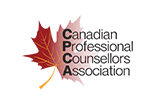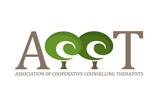
Body language, or non-verbal communication such as facial expressions, hand gestures, and tone of voice, can help to add greater nuance and clarity to interpersonal communication. About 60 to 65% of all communication is estimated to be non-verbal (Foley & Gentile, 2010). However, there are some who believe this number to be as high as 93% (Yaffe, 2011).
Non-verbal communication is an important factor for those pursuing a counselling career to watch for, as it can help professionals in this field to acquire information about a client based on how their non-verbal cues change with each session (Foley & Gentile, 2010). As many counselling sessions tend to place more of a focus on verbal communication, understanding non-verbal cues can be useful for providing greater insight into how a client is actually feeling (Foley & Gentile, 2010).
Here’s a closer examination of non-verbal communication, and how it can affect the relationship between counsellors and their clients.
Different Types of Body Language Those in Counsellor Training Should Know About
Non-verbal communication has been defined as “any form of delivery of a message beyond words when people perform an interaction with other people or the environment” (Afdal, 2016). In many ways, this type of communication can often be just as important as the verbal kind (“What Is Your Client’s Body Language Telling You?”, 2019). Examples of how body language is expressed include how one uses their arms and legs, eye contact, facial expressions, hand gestures, posture, and/or tone of voice (“What Is Your Client’s Body Language Telling You?”, 2019). Students working toward their professional counsellor diploma should know that when a client’s arms are open, it suggests that they are receptive to chatting with another person. If they’re crossed, it can mean they’re not open to conversing, or they may be feeling defensive (“What Is Your Client’s Body Language Telling You?”, 2019). Of course, anyone attempting to analyze body language should be open to interpretation. As an example, crossed arms may simply imply that the client is feeling too cold (Foley & Gentile, 2010).

A lack of proper eye contact can imply that a person is feeling uncomfortable, nervous, or bored, depending on the situation (“What Is Your Client’s Body Language Telling You?”, 2019). Eye movement in general can also be a strong indicator of a person’s internal emotions. For example, they could be visualizing something in their head if their eyes go upward and turn to the right. Likewise, eyes moving to the left can imply that the individual is remembering something they’ve heard (Allen, 2018).
Someone looking down while talking can indicate feelings of shame on that individual’s part (Afdal, 2016). Dropping one’s jaw can be a sign of shock and confusion, while hands on hips can demonstrate the individual’s readiness to take on their duties with confidence (Afdal, 2016). Breathing patterns can also speak volumes, as they can imply feelings of calm, enthusiasm, anxiety, and/or anger (Allen, 2018). These are just some of many types of non-verbal communication and the possible internal feelings driving them in the individual.
What Body Language Might Suggest About Individuals
Some non-verbal cues including fidgeting, difficulty with balance, and inability to maintain eye contact, can imply the presence of mental health issues or a neurological disorder (“What Is Your Client’s Body Language Telling You?”, 2019). Difficulty in maintaining eye contact may be particularly apparent among those who have social anxiety disorder (Schneier, Rodebaugh, Blanco, Lewin, & Liebowitz, 2011). This is because they fear being scrutinized by others, which can lead to them avoiding eye contact with others altogether (Schneier, Rodebaugh, Blanco, Lewin, & Liebowitz, 2011).
In some cases, non-verbal communication can be an indicator of post-traumatic stress disorder, major depressive disorder, or substance withdrawal and intoxication (e.g. opiates, cannabis) (Foley & Gentile, 2010). Various types of body language can also be representative of conditions such as ADHD, autism, bipolar disorder, or schizophrenia (“What Is Your Client’s Body Language Telling You?”, 2019).
How Body Language Can Be Applied in Counselling
Your job upon completing your counsellor training will be to help clients achieve optimal wellness, based on the skills you learn in your program. As a counsellor, you are looking to see how a client’s body language matches what they’re saying (Allen, 2018). Body language can help to facilitate a stronger relationship between client and counsellor, as watching for non-verbal communication can help you to respond to a client more appropriately during a session—leading them to feel more supported and at ease in your presence (Allen, 2018). A client’s body language can say a lot about their internal feelings, possibly indicating what isn’t being said in a session which may help the counsellor to interpret what’s going through their client’s mind (“What Is Your Client’s Body Language Telling You?”, 2019).

Non-verbal cues on the part of the counsellor are important in sessions as well, as this type of communication can help to improve interactions with clients (Foley & Gentile, 2010). Counsellors should remember to use certain non-verbal skills in particular with their clients every day. These include smiling when the client arrives at your practice, nodding your head to demonstrate you understand and acknowledge what they’re saying, and adjusting your tone of voice and speech pace to adapt to how the client is speaking to you (Afdal, 2016). As you train to become a counsellor, it’s important to remember that maintaining a strong relationship with your future clients will be partly determined by the body language being used by both parties (Foley & Gentile, 2010).
Want to start learning at a Vancouver counsellor training college?
Contact Rhodes Wellness College today to find out more!
Works cited:
Afdal, A. (2016). Understanding Of Non Verbal Behavior Clients And Techniques In Counseling Session. GUIDENA: Jurnal Ilmu Pendidikan, Psikologi, Bimbingan Dan Konseling, 6(1), 33. doi:10.24127/gdn.v6i1.405
Allen, L. (2018, January 24). Body Language and How it Relates to Therapy. Retrieved from https://naturalhealthcourses.com/2015/06/body-language-and-how-it-relates-to-therapy/
Foley, G. N., & Gentile, J. P. (2010). Nonverbal communication in psychotherapy. Psychiatry (Edgmont (Pa. : Township)), 7(6), 38–44.
Schneier, F. R., Rodebaugh, T. L., Blanco, C., Lewin, H., & Liebowitz, M. R. (2011). Fear and avoidance of eye contact in social anxiety disorder. Comprehensive psychiatry, 52(1), 81–87. https://doi.org/10.1016/j.comppsych.2010.04.006
What Is Your Client’s Body Language Telling You? (2019, January 11). Retrieved from https://www.goodtherapy.org/for-professionals/marketing/customer-experience/article/what-is-your-clients-body-language-telling-you
Yaffe, P. (2011). The 7% rule. Ubiquity, 2011(October), 1-5. doi:10.1145/2043155.2043156








